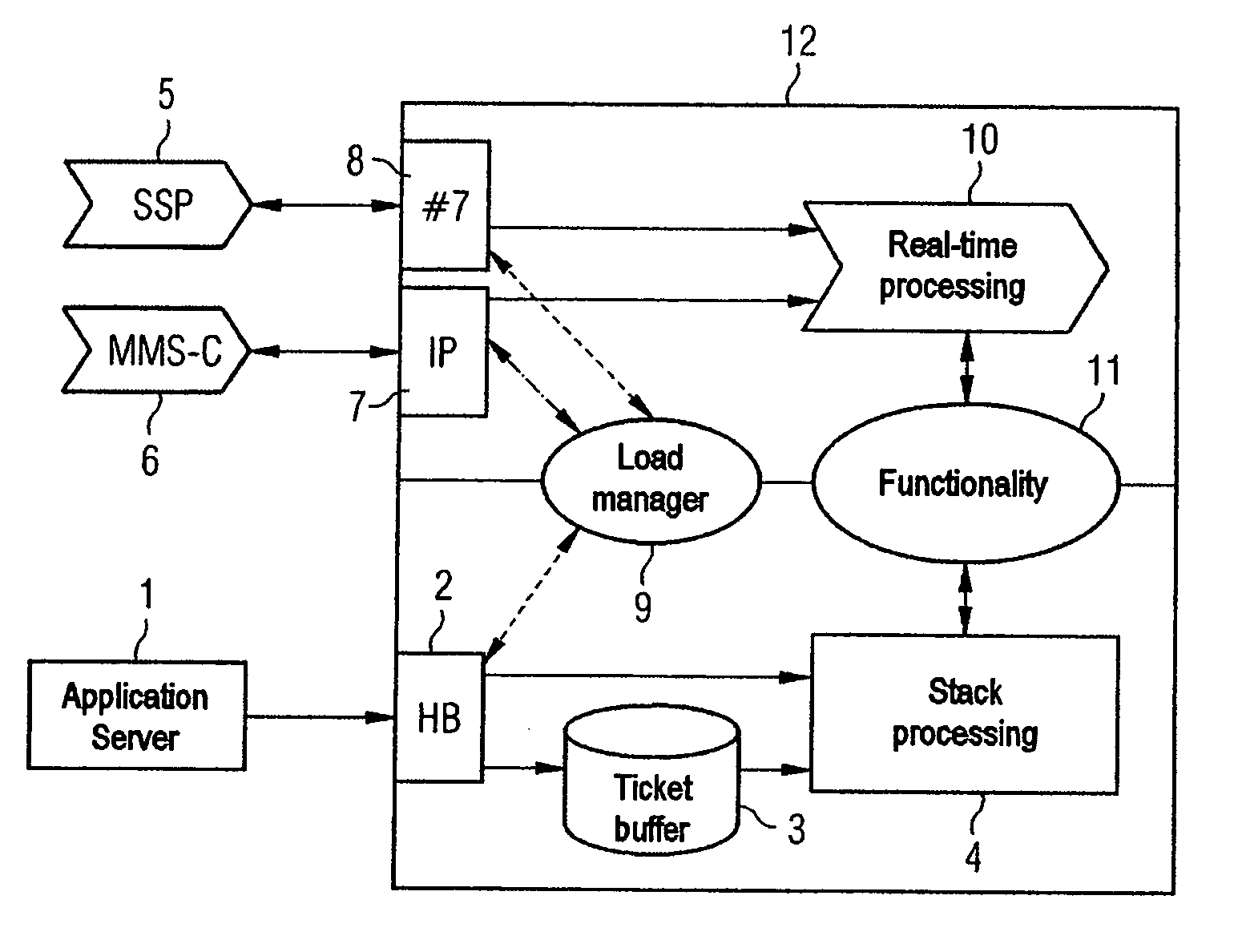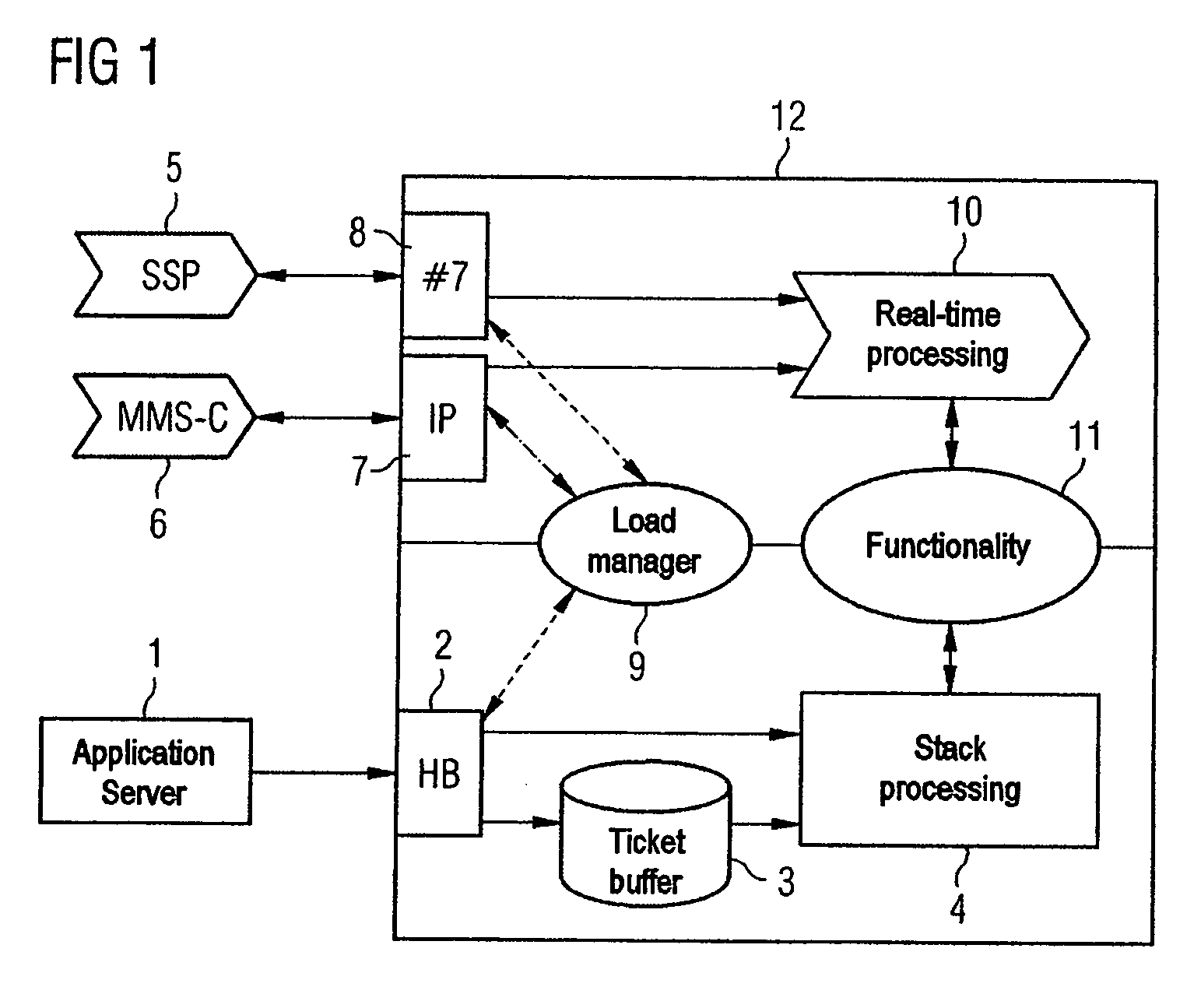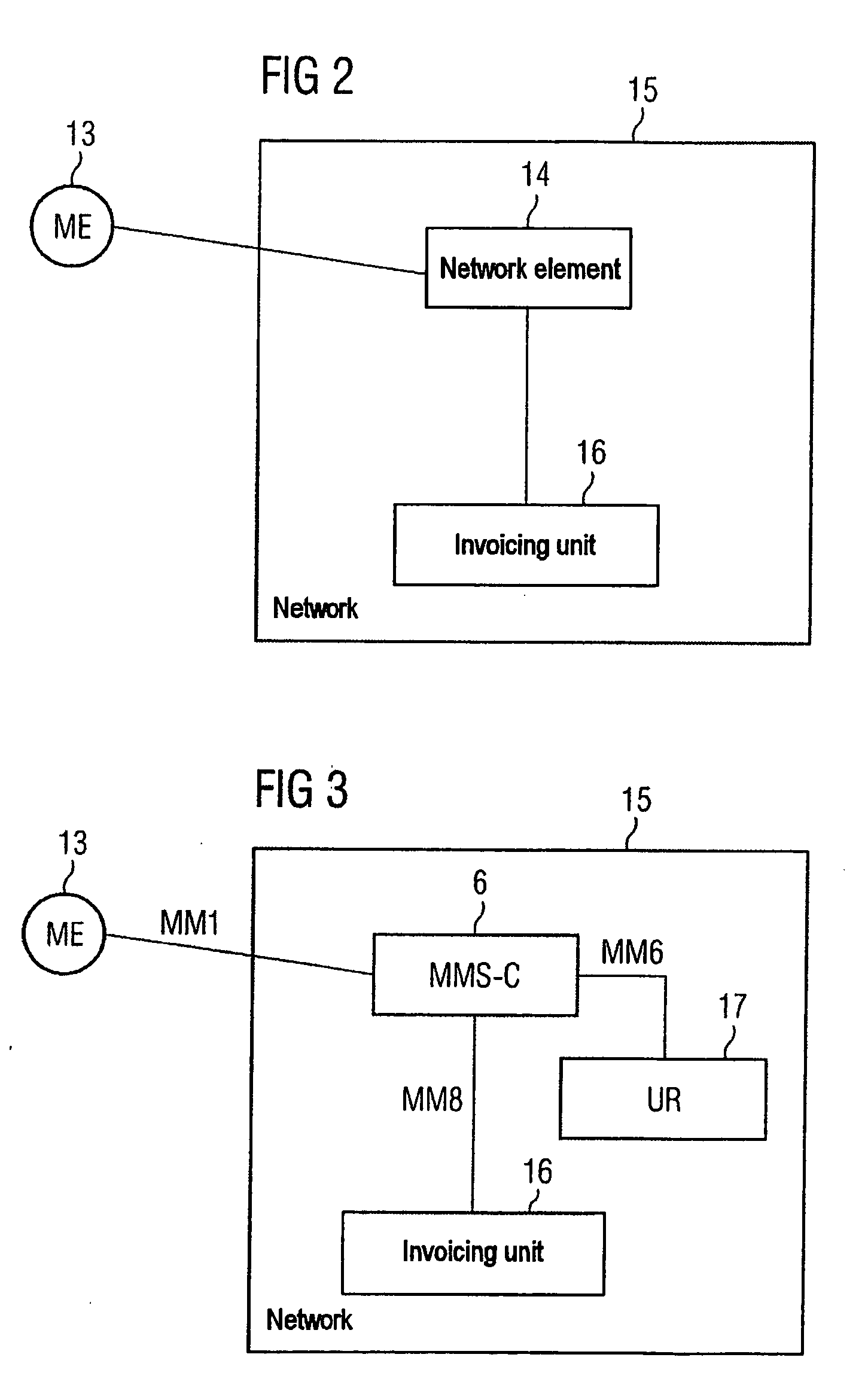Dynamic processing of data processing instructions
- Summary
- Abstract
- Description
- Claims
- Application Information
AI Technical Summary
Benefits of technology
Problems solved by technology
Method used
Image
Examples
Embodiment Construction
[0021]FIG. 1 shows a simplified flowchart for a dynamic data processing system 12 on the basis of an LoB enabling service which invoices for the use of IP and #7 services by mobile communication subscribers. Billing instructions can be sent to the EDP system 12 via different interfaces.
[0022] The dialog-oriented interfaces 2, 7, 9 which report back the processing result to the instruction issuer include the INAP / CAP-(SS-#7) protocol interface 8 and the radius (IP) interface 7. Stack-oriented processing instructions are sent to the system 12 via a ticket-based hot billing interface 2. Processing instructions can come from an application server 1, a Multimedia Messaging Center (MMS-C) 6, a storage service provider (SSP) 5 etc.
[0023] Regardless of the interface 2, 7, 9 used, the billing instructions are handled in an identical manner in terms of operation, however. A mobile communication subscriber is thus invoiced for the same sum regardless of which interface 2, 7, 9 is used to iss...
PUM
 Login to View More
Login to View More Abstract
Description
Claims
Application Information
 Login to View More
Login to View More - R&D
- Intellectual Property
- Life Sciences
- Materials
- Tech Scout
- Unparalleled Data Quality
- Higher Quality Content
- 60% Fewer Hallucinations
Browse by: Latest US Patents, China's latest patents, Technical Efficacy Thesaurus, Application Domain, Technology Topic, Popular Technical Reports.
© 2025 PatSnap. All rights reserved.Legal|Privacy policy|Modern Slavery Act Transparency Statement|Sitemap|About US| Contact US: help@patsnap.com



